
12 minute read
A HEALTHY HOME
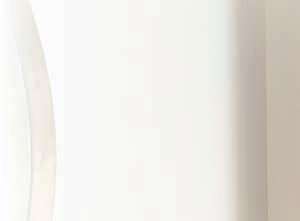
In the ZONE



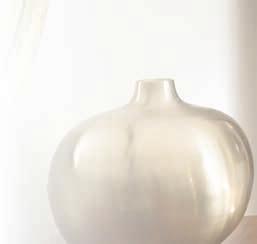
With people spending more time at home, healthy practices are vital to ensure a positive environment for all. Hasmita Amtha investigates what can be done to create a harmonious living space k eeping your home a healthy living space is important, says behavioural specialist, spatial strategist and interior creator Kim Williams, of Kim Williams Design. “We underestimate the impact our environment has on our sense of well being and health. It’s important your space works for you.” Williams suggests taking Kim Williams the interior-design approach of zoning.
Zoning gives every space a function or multiple functions, and helps you demarcate and think about how you use your space, says Williams. “We all have different emotional needs and react to environments in unique ways. Some of us need more time alone, some need time together, some need to exercise, while others need time for creative tasks like writing. These emotional components must be given consideration in the home, because of their importance for how we sustain ourselves.”
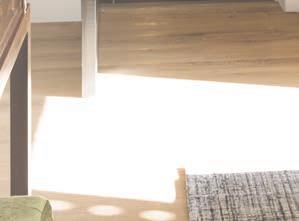

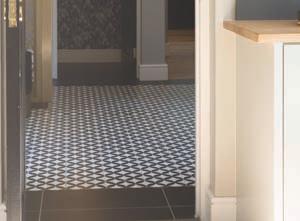

HOW TO DO IT
Zoning our spaces is a key step towards achieving the perfect balance between form, function, flow and finesse, says Williams. Here’s how: • First de-clutter by creating order and giving everything a place. • Consider your layout. Focus on what you need the space to do and what boundaries you need to work around that will create a more functional design. • Make sure everyone has a place to work, with spaces for phone/Zoom calls, preferably out of earshot. You can also use soundproof sponge on doors, and screens to help with white noise. Screens are extremely useful to create privacy in open-plan spaces, and are used to subdivide or create sound barriers. • Make shared spaces flexible. The lounge can be used as a social, relaxation and exercise space. Multifunctional, movable furniture works well here. • Keep lighting in mind. Have spaces that are more ambient and others that are well lit for working and studying.
“We underestimate the impact our environment has on our sense of well-being and health.” – Kim Williams HOUSEKEEPING101









In the words of pro organiser, author, blogger and Netfl ix TV series host Marie Kondo, a space needs to “spark joy”, and while de-cluttering plays a major role in having a breathe-easy home, keeping it spotlessly clean is important for our mental and physical well-being.
Speaking to experts in the industry, we look at why a professional clean, air and water fi lters, and natural cleaning products can help keep the whole family healthier.
DEEP CLEAN
With COVID-19 making us all more conscious of cleanliness and keeping germs at bay, a professional deep-cleaning service has never been more necessary.
CLiCK Cleaning founder Joanna Jenkinson stresses the importance of this type of cleaning service every three to six months. “The benefi ts are worth keeping in mind. From reduction in allergies to improving indoor air quality and eliminating harmful bacteria and viruses, it does wonders for everyone’s health.”
Deep cleaning usually involves cleaning the surface areas with the use of industrial machines or active chemicals, then disinfecting surfaces after cleaning, says Jenkinson. “We are green certifi ed and HACCP compliant. We use professional extraction machines to deep clean upholstery,
carpets and rugs, mattresses and so forth. We use certifi ed enzyme cleaners that provide natural anti-pathogen and deodorising treatments after cleaning. Our cleaning enzymes are SABS and NRCS approved, non-toxic, and safe to use around children, pets and clients with allergies or hypersensitivity to chemicals. Enzymes – used for bathrooms and kitchens – are designed to eat away built-up grime and bacteria.”
For day-to-day cleaning, a vacuum cleaner is a must – but not just any vacuum cleaner. For a thorough clean, Mercia de Jager of Miele SA recommends an appliance with a high-effi ciency particulate air (HEPA) fi ltration system, which will not only clean your home but purify the air too. “These systems offer an advanced level of cleanliness, as they trap particles as small as 0.1 of a micron, ensuring allergens and bacteria are captured as well as the usual household dirt and dust,” says De Jager.
KEEP IT FILTERED
Nature lovers will appreciate how good pure air and water taste in the great outdoors. Now there are products to help achieve this purity at home.
A popular appliance used in countries where air pollution is a daily concern, the Dyson Pure Cool is said to remove 99.95 per cent of allergens and pollutants as small as 0.1 microns in size from the air. “With all the benefi ts of Dyson’s Air Multiplier technology, it also has a 360-degree vacuum-sealed glass HEPA fi lter to capture other ultra-fi ne particles from the air and eliminate potentially toxic fumes and odours,” says Danielle Cardoso-Lopes of Tudortech, which distributes Dyson products in South Africa. “This product is certifi ed asthma and allergy friendly, as it’s scientifi cally proven to reduce your exposure to allergens considerably.”
WATER WISE
Water makes up 73 per cent of our brains and 60 per cent of our bodies. “For this reason, it is absolutely critical to drink enough water and, importantly, to ensure the water you are drinking is ‘healthy water’ and not contaminated or de-mineralised,” says Camilla Morrisby of KURO-Bō.
Explaining further, Morrisby says: “Controlled low levels of chlorine are added to drinking water to eliminate bacteria, and are a necessary evil so to speak. Levels in our municipal water should not be damaging to our health, but prolonged exposure to chlorine has been proven to be potentially detrimental on many levels.”
This, says, Morrisby, is why a fi lter is so important, and an affordable solution like KURO-Bō’s range of Activated Charcoal Sticks provides a convenient way to ensure your water is safe to drink.
SoPure
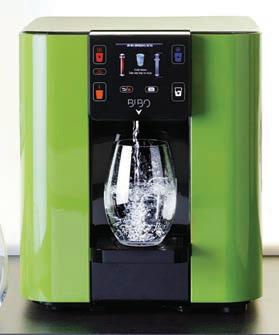
KURO-Bō
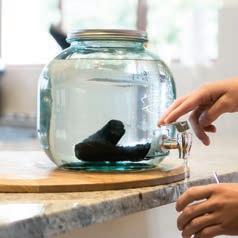
EARTHSAP
MIELE
BIBO
On the purifi cation of water, BIBO Water SA’s Divo Finger says: “In the modern era we have numerous purifi cation processes to ensure that the water we drink is clean and fi t for consumption. None of these are perfect and each comes with its own advantages and disadvantages. For example, certain processes can fi lter the water to its purest form, but in the process waste large quantities of water and remove important minerals.
“Our BIBO bar uses the latest technology in water purifi cation,” says Finger. “The multi-stage fi ltration fi rst uses the MAXI fi lters to remove harmful elements such as chlorine, fl uoride, arsenic and hormones, while maintaining all the essential minerals and irons inherent in water. The second stage in the purifi cation process utilises the BIBO zapper, which instantly removes bacteria, pathogens and living micro-organisms from the water. During this process there is zero water waste and every drop is fi ltered to the highest quality.”
CLiCK CLEANING
BEFORE
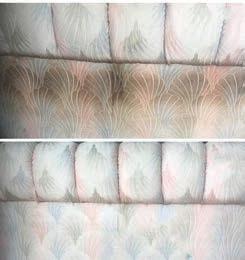
AFTER
DYSON
SQUEAKY CLEAN
Natural cleaning products are on the rise, and one brand that has gained in popularity is SoPure Nature’s Laboratory. Explaining the importance of natural products, the company’s Dr Romy Levy says natural products are gentle and kind on the skin, respiratory system, immune system and hormonal health, as those systems are highly sensitive to the multitude of toxins found in most widely used personal care and cleaning products.
“Our homes are the foremost place where we may control our exposure to toxic, damaging chemicals,” says Levy. “The American Association of Poison Control speaks to 91 per cent of all poison exposure occurring in private homes. This suggests that there is a great need for all of us to swap out harmful, chemical-laden products in favour of their whole-earth counterparts.”
Another brand to keep an eye out for is Earthsap. With none of the nasties like chlorine bleach and other harmful chemicals, this home cleaning range also has no synthetic fragrances, irritants or allergens. Spokesperson Kelly Burke says: “With no fumes or residue, these products are safe for your family, your pets and the environment. And because they’re biodegradable, they won’t cause any harm to aquatic life or marine plant growth.
“Earthsap strives to keep bringing South Africans an effective, eco-friendly alternative to household cleaning and skin care, ethically produced and not tested on animals.”
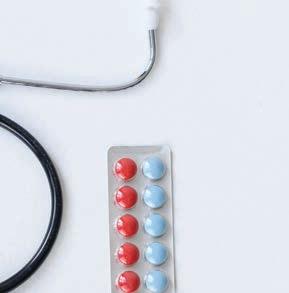



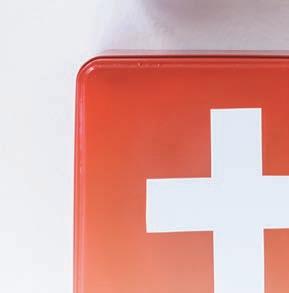
Doctor’s ORDERS
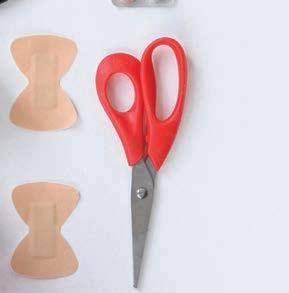
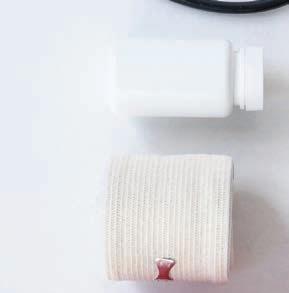
DISCLAIMER: WITH MEDICAL ADVICE, ALWAYS CONSULT A GP OR PHYSICIAN AS EACH PERSON DIFFERS.
Family medical practitioner Dr Daniel Israel says an at-home medical kit is a non-negotiable, and it should be governed by these two principles: to quickly contain emergencies; and to safely address the “vicissitudes” of the body conveniently. Here’s what Dr Israel recommends:
EMERGENCY ESSENTIALS
• Appropriate bandages, tourniquets and dressings to stop bleeding • Burnshield • A CPR home kit (with gloves and a mouthpiece) • Adrenaline (EpiPen) for anaphylaxis • Thermometer.
MEDICAL KIT MUSTS
ANALGESICS: Pain is a modality that in most normal physiology is the body’s way of alerting you to a problem that needs addressing. While it’s safe to put out the pain quickly, it’s important to note its occurrence. Don’t ignore its frequency and use the analgesic as a solution rather than temporary assistance. Mild analgesics (paracetamol) are preferred to treat pain fi rst, while moderate analgesics (ibuprofen) should be a second-line option.
DID YOU KNOW?
Robert Wood Johnson, co-founder of Johnson & Johnson, was travelling on the Denver & Rio Grande Railroad when he struck up a conversation with the railway company’s chief surgeon and learned that railroad workers often sustained injuries that proved fatal because they lacked access to hospitals or on-site emergency medical supplies. Moved to help, Johnson reached out to surgeons at other railroads to research what kind of supplies would be most useful — and then used this intel to create the fi rst commercial fi rst aid kits, packed with necessities such as sutures, sterile wound dressings and surgical tape. Source: jnj.com
Here are some guidelines when using an analgesic, based on intensity:
Mild: paracetamol (syrup for kids, tablets for adults). Don’t use it daily like you would a supplement. Although mild, it is still metabolised in the liver. If you’re having to take it more than twice a week, it’s a sign that you’re not addressing the underlying cause of the pain. Moderate: ibuprofen (syrup for kids, sugar-coated tablets for adults). Ibuprofen should be used as a second-line option. If two paracetamols don’t work initially, then opt for two Nurofen tablets (adults only). As ibuprofen is metabolised in the kidneys, it’s not for folks with kidney issues. Dr Daniel Israel Strong: products containing codeine, tramadol and opioids. No place for these in a routine at-home kit, as they cause more harm than good. Big potential for constipation, addiction and masking ongoing problems through overuse.
ANTI-PYRETICS (FEVER KILLERS): Both paracetamol and ibuprofen can be used to combat fever. Fever is part of the body’s response to an infection that it is fi ghting off. Again, paracetamol as fi rst-line, ibuprofen as second-line.
ANTIHISTAMINES: A non-sedating antihistamine is recommended. It’s safe and combats most allergic reactions (from sudden attacks of rhinitis to unexplained dermatitis) with marginal side effects. Do note: epileptics should not freely take antihistamines without consulting their doctor.
CREAMS (DRY) AND OINTMENTS (MOISTEN): An antibiotic ointment like mupirocin calcium (Bactroban) is safe for treating a small abrasion or pimple with pus, but only if it’s red and oozing discoloured fl uid. Don’t use antibiotic ointments on every scratch or scrape. Some deeper lesions need opening – consult your doctor. An antifungal ointment may not be a must, but it certainly helps to have one on hand. An over-the-counter 1 per cent hydrocortisone cream (Mylocort) is great for small patches of skin reactions from contact with irritants.
LAXATIVE: Senna glycoside (Senokot) and a glycerine suppository on standby for major discomfort. The caution is not to get into the habit of using laxatives regularly – this worsens the problem and may mask serious underlying issues.
ANTI-EMETICS: Vomiting is the body’s way expelling pathogens from the gut. A safe anti-emetic like Valoid is great. Not to be used in children younger than six, as it has neurological side effect risk.
ANTI-SPASMODIC: Buscopan is good for a stomach ache. Not very effi cacious orally, but still helps with the odd cramp and is safe for children.
DECONGESTANT NOSE SPRAYS (ADULT AND PAEDIATRIC STRENGTHS):
If you’re struggling to breathe at night, a decongestant nose spray will provide relief. Be warned: regular use causes infl ammation of the nasal mucosa and rebound congestion. For congestion sufferers, saline nose sprays are far preferable for daily use.








